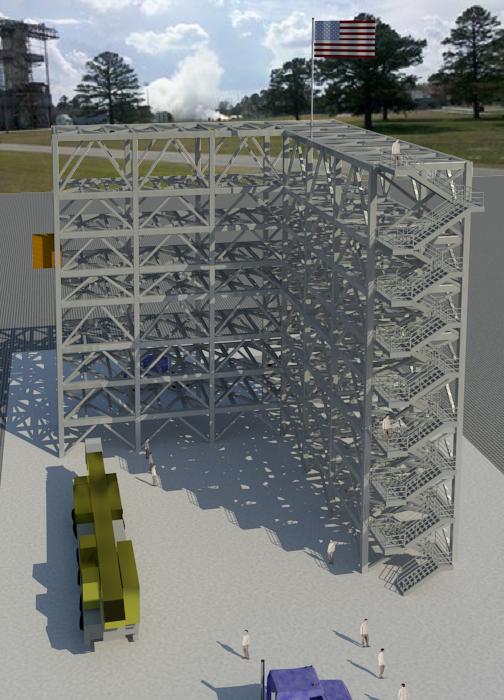NASA’s Space Launch System (SLS) will have the largest cryogenic fuel tanks ever used on a rocket. Stands to test the tanks and other hardware to ensure that these huge structures can withstand the incredible stresses of launch will be built at NASA’s Marshall Space Flight Center in Huntsville, Alabama.
NASA is contracting for the construction of the test stands through the U.S. Army Corps of Engineers, which has awarded a $45.3 million contract to Brasfield & Gorrie of Birmingham, Alabama.
SLS will be the most powerful rocket in history and the launch vehicle that will send astronauts in NASA’s Orion spacecraft beyond low-Earth orbit into the solar system on missions to an asteroid and eventually to Mars.
The test stands will be used for the SLS core stage, which will store cryogenic liquid hydrogen and liquid oxygen. The core stage is made up of the engine section, liquid hydrogen tank, intertank, liquid oxygen tank and forward skirt. As the five parts of the core stage are manufactured, they will be shipped by barge from NASA’s Michoud Assembly Facility in New Orleans to Marshall for testing.
“These stands are necessary to accommodate the sheer size of the core stage components, and the extreme loads we are putting on them — some up to 9 million pounds,” said Tim Gautney, element discipline lead engineer for SLS core stage testing. “We will use hydraulic cylinders to push, pull, twist and bend these pieces to make sure they can withstand the loads and environments they may experience on the launch pad and upon ascent. The tests also will verify the models already in place that predict the amount of loads the core stage can endure.”
The 215-foot stand, Test Stand 4693, with a twin-tower configuration, will be made with 2,150 tons of steel. It will be used for testing the liquid hydrogen tank. When completed, it will be 185 feet long after special structures are added to it. The tank will be placed in the stand vertically, and be loaded with liquid nitrogen for stress testing. It is being built on the foundation of the stand where the Saturn V F-1 engine was tested.
The second test stand, Test Stand 4697, is a 692-ton steel structure about nine stories high, or 85 feet. It will be used to test the liquid oxygen tank and forward skirt in Marshall’s West Test Area. “Within the foundation of this stand, we have 1.75 miles of embedded anchor rods — that gives you an idea of the type of stability we need to test these parts with such high-level force,” said Byron Williams, project manager for the liquid oxygen tank and forward skirt test stand.
The estimated year-long construction is expected to begin in late May.
NASA and the Corps entered into an agreement for construction of the test facilities and NASA transferred funds to the Corps for this purpose. The facilities were designed by a joint venture team of the architecture and engineering firms Goodwyn Mills and Cawood, of Montgomery, Alabama, and Merrick & Company of Greenwood Village, Colorado.
By Megan Davidson
Marshall Space Flight Center, Huntsville, Ala.
Media Contact:
Angela Storey
Marshall Space Flight Center, Huntsville, Ala.
256-544-0034



























